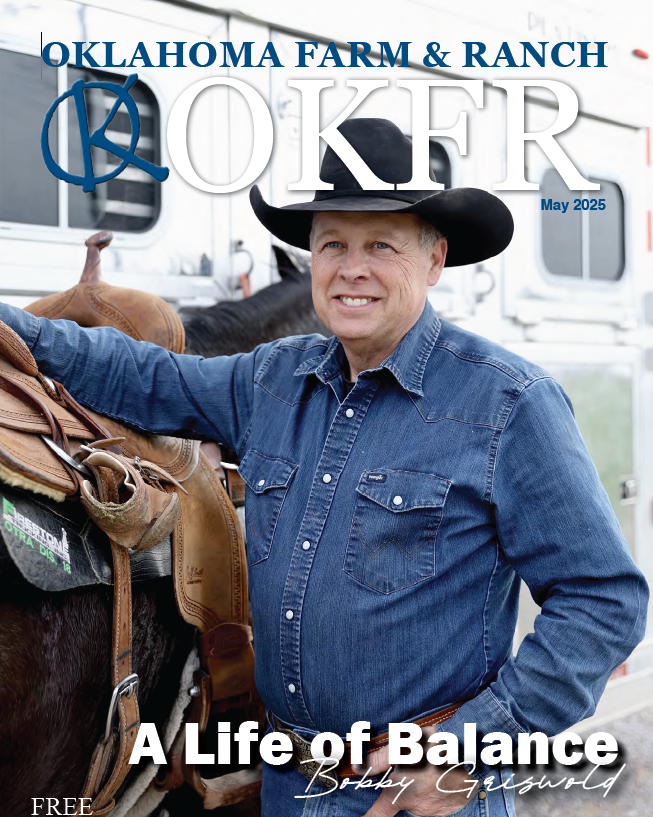Farm & Ranch
Dr. Katie Blunk: Maintaining the Path to Sound Conservation Practices
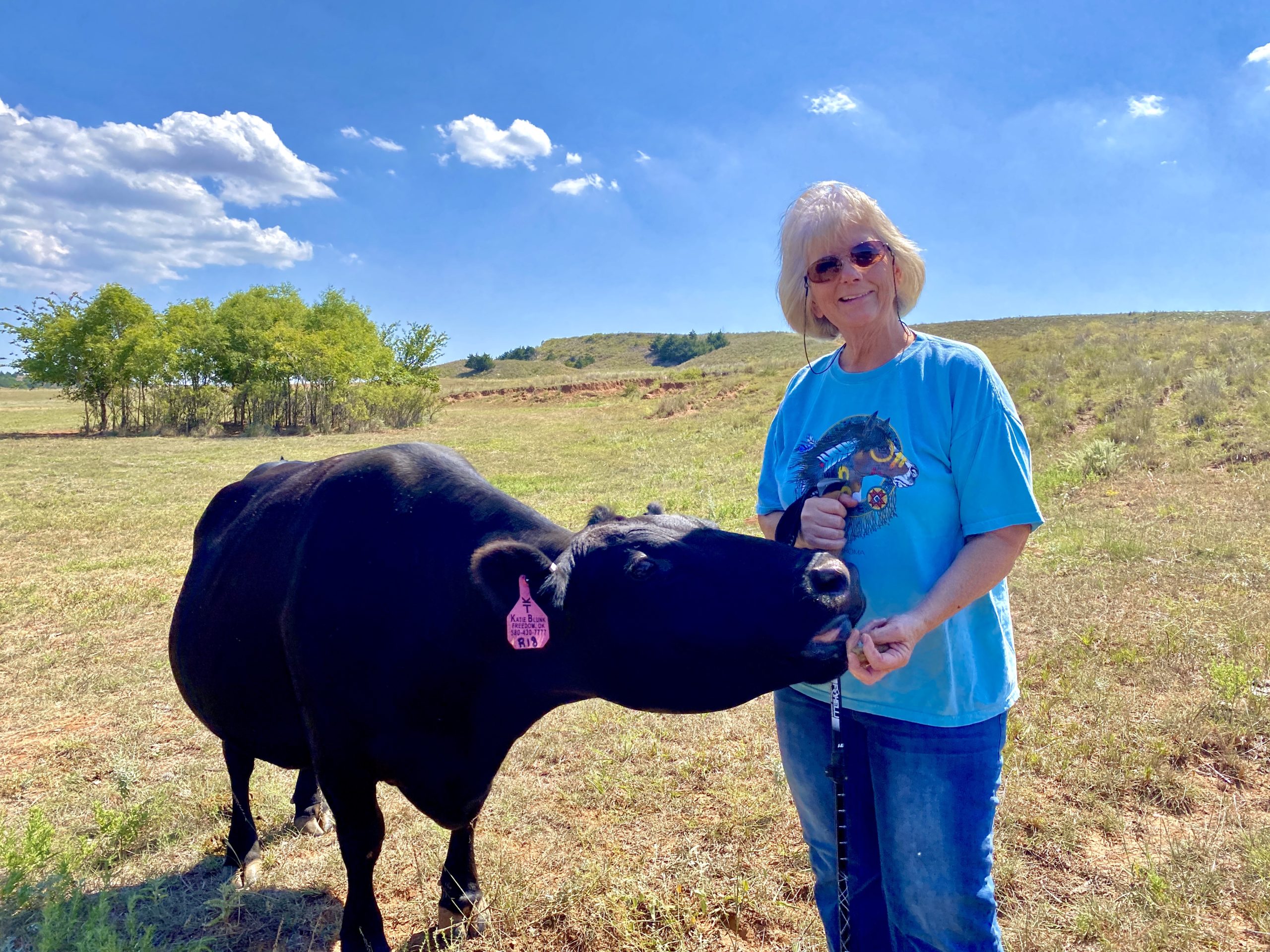
Parents clearing paths for their children isn’t uncommon.
However, what makes this story special is that Dr. Katie Blunk says the path her mother Rose Blunk cleared for her — and the land — was thick with cedars. Many Oklahomans can close their eyes envision that scene or look through their windshield and see it.
Blunk’s ties to conservation run generations deep, and are bound with strong praise for her grandparents and parents, and her husband. Still, she focusses in on the actions of her mother.
After the passing of Katie’s father, Rose was thrust head-on into managing the family lands between Kansas and Oklahoma, and was overwhelmed with the level of invasive Eastern Red Cedars she discovered on the Oklahoma ranch.
Katie’s trail blazing mother shouldered into the daunting task of cutting cedars and the unchartered territory of implementing prescribed fire on the ranch, with the financial and technical assistance of the local USDA-NRCS office.
Over the next decade, Rose eventually began to see her way out of the cedar forest, and her perseverance and dedication to being a good land steward paved the way home for Katie and Michael.
LOOKING BACK/WORKING FORWARD…
Dr. Katie Blunk was born in rural northwest Oklahoma in the town of Alva, Oklahoma, located in Woods County. Raised on the Kansas portion of the Blunk family farm and ranch operation located northwest of Hardtner, Kansas, Blunk obtained her Doctor of Veterinary Medicine degree from Kansas State University in 1980.
Her veterinary career took her to Reno, Nevada as a field veterinarian for USDA-APHIS-Veterinary Services. In 2012, after 31 years of service, she retired from veterinary medicine and relocated back to her family roots in Oklahoma. This move took her to the Oklahoma portion of the family’s ranch that is located northwest of Freedom, which is now called the Lazy KT Ranch.
Katie Blunk and Michael Horntvedt exchanged their wedding vows during a horseback wedding ceremony in 2009, on one of her favorite spots on their Oklahoma ranch; this special spot is known as Jackass Ridge. This “special location” has its own entertaining history as reflected by its name, which is a whole other humorous story that does involve real donkeys. This spot on the ranch ultimately led to the new county road designation winding into their ranch, with the road now officially named “Jackass Ridge Road.”
Their ranch is nestled in open range country in the Red Hills of Oklahoma. The Lazy KT Ranch boasts beautiful landscapes laced with ruggedly scenic red canyons and cliffs, native prairie, wildflowers, and creeks.
Blunk calls it, “A true cowboy’s dream.”
This Oklahoma cattle ranch bears fond memories from Blunk’s childhood days, where she spent summer days of her youth visiting her Grandfather Blunk. She fondly recalls that “Riding horses on Grandpa’s cattle ranch and picking wildflower bouquets were among some of my favorite things.”
Her childhood no doubt greatly influenced both her lifelong love of the land, horses, cattle, plus her career choice as a veterinarian. Now, she has come full circle back to ranching.
In addition to being good land stewards, Katie and Michael’s teamwork has built a successful cow-calf and seedstock operation.
The couple pride themselves in their Black Angus cattle operation that focuses on genetics that represent years of discipline and a commitment to produce livestock that will perform well in their environment, are economically sustainable, and create the ultimate consumer dining experience.
“Plus, we incorporate our cattle as a grazing tool to aide us with our rangeland restoration goals, trying to mimic the days of buffalo roaming the prairies laced with nature’s wildfires that reinvigorated soil health and native grasses on the prairies from the combination of fire and grazing,” Katie Blunk said.
STRONG TIES TO CONSERVATION…
Both Katie and Michael were raised with farm and ranch backgrounds which instilled a strong work ethic in them, and the notion to try and leave things better than how you found them. Coupled with these values from their upbringing was an inherent love for the land, nature and the greater outdoors.
Blunk recalls many tales from her grandparents who endured the Dust Bowl era and stories about the hardships and conservation programs that evolved subsequent to that devastating period in agriculture’s history.
She also reflects on childhood memories of how her father worked hard to capture precious water resources by building ponds, and battled erosion by building terraces in his red dirt fields.
However, again, the person she credits with the most influence on her current day involvement with conservation is her mother, Rose Blunk. What she did, cleared the way for what was to come.
In 2012, Katie and Michael began the next chapter of their lives building their home and cattle headquarters on this Northwest Oklahoma ranch. Rose had ‘’cleared the cedar path’’ both literally and figuratively.
Katie and Michael picked up the reins to carry onward with Rose’s rangeland restoration efforts. Their hard work on the ranch continues to please their matriarch in whose footsteps they have followed, Rose Blunk.
Living on the ranch today for Katie has evolved from childhood memories to an everyday reality.
“We are ready to roll on a moment’s notice to help our neighbors with a prescribed burn, and likewise are greatly appreciative of the help we receive as well,” Blunk said. “Managing the ranch has become a story of collaboration for us. It’s a story of neighbors helping neighbors to apply prescribed fire to the lands to improve the rangelands, enhance grazing for livestock and wildlife, protect water resources, invigorate wildlife populations including prairie chickens, quail, and wild turkeys, promote nectaring habitats for the Monarch butterflies and other pollinators, and to reduce the future impacts of wildfires.”
When Blunk returned to Oklahoma in 2012, she became involved with the local prescribed burn association that her mother had been a part of, which was comprised of over 50 local ranchers.
“Getting good fires on the lands soon became a passion for me,” she said. “I have volunteered my time to educate the public with speaking engagements, social media, and I serve as President of the local prescribed burn association called the Cimarron Range Preservation Association. I cannot say enough good things about the great satisfaction I get from returning to my roots and being a part of this amazing culture in rural America where neighbors help neighbors to achieve common goals of restoring the prairies.”
Blunk emphasizes that on their ranch, they are committed to ongoing land stewardship that incorporates multiple conservation practices.
Some examples are utilizing rotational grazing, patch prescribed burning to drive intensive grazing, continual cutting of Eastern Red Cedars, application of prescribed fire to different burn units on the ranch every year, fencing off sensitive riparian areas, revitalizing springs, maintaining ponds, developing solar powered water wells, mulching dead cedar skeletons, and ongoing monitoring for appropriate forage levels and adjusting accordingly the appropriate stocking rates.
She maintains that “prescribed fire is the best and most economical tool in the battle against the invasive Eastern Red Cedar”, and it is clearly a tool that she is passionate about.
Blunk has seen many benefits come from applying good fires to the land, coupled with a good livestock grazing plan, noting that grazing and good fires go hand in hand to restore the prairies for generations to come. The results are tremendous. Wildflowers abound, milkweed returns, and the native range bursts with a mosaic diversity of plant species and native grasses. Soil health improves, water and air quality are better, wildlife and cattle flourish, happy grazers and butterflies coexist, while the prairies reap the benefits of being good land stewards for generations to come.
However, there’s even more to Blunk’s conservation story. After encountering Okies for Monarchs at the state meeting hosted by the Oklahoma Association of Conservation Districts, she became a huge advocate for them.
Fun, collaborative relationships sprung forth from her Okies for Monarchs introduction, that led to her being featured by The Oklahoma Nature Conservancy in their Spring 2020 Oklahoma Impact Report about using prescribed fire on their ranch to benefit the Monarchs. The Oklahoma Nature Conservancy also had Katie do a ‘live Facebook takeover’ in the month of May, 2020, featuring an actual prescribed burn, showcasing her ranch practices and discussing benefits of conservation practices on their ranch. The TNC wrapped up that month with an interactive webinar hosting Katie in her ranch setting, about sustainable ranching and the use of prescribed fire to help Monarchs on Oklahoma Rangelands.
Blunk was also featured in a short documentary that The Oklahoma Nature Conservancy released in May 2020 from their filming on her ranch during the previous spring of 2019, with the crux being that agriculture producers like them are “on fire for the Monarchs.”
Read more in the July issue of Oklahoma Farm & Ranch.
Farm & Ranch
Cattle Nematodes (Worms)
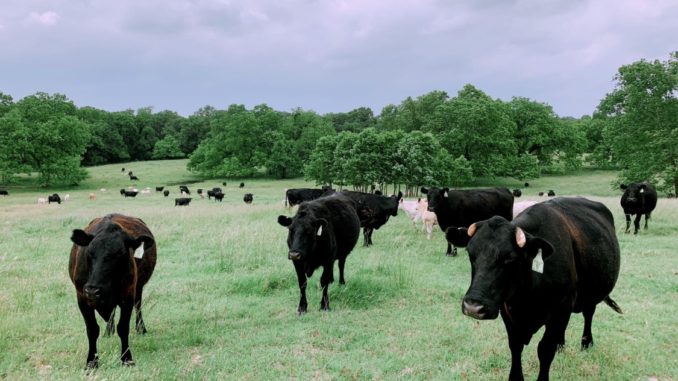
Barry Whitworth, DVM | Senior Extension Specialist | Department of Animal & Food Sciences
According to the Mesonet, Oklahoma received some much-needed rain in late April (2023). With the moderate temperatures and high humidity, the environment is perfect for the proliferation of gastrointestinal nematodes (GIN) which are commonly called “worms.” Cattle can be infected with a variety of GIN. Most do not cause issues unless husbandry practices are poor. However certain GIN have been associated with disease. The most pathological GIN in cattle is Ostertagia ostertagi. Cooperia species and Haemonchus species are two that have been implicated with production issues. Control of these parasites is constantly changing due to environment, anthelmintic (dewormer) resistance, and consumer preference. Cattle producers should develop a plan to manage these parasites.
In order for GIN to complete their life cycle, certain environmental conditions must exist. The development stage begins with passing of the egg in the feces of the animal. If the egg is to hatch, the temperature must be warm and the humidity needs to be close to 100%. Ideal temperature ranges from 70⁰ to 80⁰ Fahrenheit (F), but any temperature above 45⁰ F will allow for development. Temperatures above 85⁰ F or below 45⁰ F will begin to hamper development. Humidity needs to be 80% or higher.
Once the egg hatches, the larva goes through a couple of molts to reach the infective stage which is the third stage larva (L3). L3 must have moisture to free itself from the fecal pat. Once free, it rides a wave of water on to a blade of forage. Once ingested, this begins the prepatent or pre-adult stage. Two molts take place during this stage (L3 to L4 and L4 to L5). If conditions are not favorable for survivability of offspring, L4 will go into an arrested development stage (hypobiosis) for a period of time. The patent or adult stage is the mature breeding adult.
Once inside the body, the parasite will migrate to certain locations in the digestive tract. For example, O. ostertagi develop in the gastric gland in the abomasum. H. placei and H. contortus will migrate to the abomasum. Cooperia species will live in the small intestine. A few like Trichuris (whipworms) are found in the large intestine.
Clinical signs of parasitism vary according to the species of parasite, burden, and site of attachment. Severe disease, which is referred to as parasitic gastroenteritis (PGE), with internal parasites is unusual with today’s control methods. Clinical signs of PGE are lack of appetite, weight loss, weakness, diarrhea, submandibular edema (bottle jaw), and death. However, most parasite infection are subclinical which means producers do not see clinical signs of disease. In subclinical infections, the parasite causes production issues such as poor weight gain in young cattle, reduced milk production, and lower pregnancy rates.
Producers should be monitoring their herds for parasites throughout the year but especially in the spring when conditions are ideal for infection. A fecal egg count (FEC) is a good way of accessing parasite burdens. Livestock producers need to gather fecal samples from their herd periodically. The samples should be sent to their veterinarian or a veterinary diagnostic lab. Different techniques are used to access the number of eggs per gram of feces. Based on the counts, the producer will learn the parasite burden of the herd. Producers can use this information to develop a treatment plan.
In the past, GIN control was simple. Cattle were routinely dewormed. Unfortunately, anthelmintic resistance has complicated parasite control. Now proper nutrition, grazing management, a general understanding of how weather influences parasites, biosecurity, refugia, anthelmintic efficiency, and the judicious use of anthelmintics are important in designing an effective parasite management program. All of these considerations need to be discussed in detail with a producer’s veterinarian when developing a plan for their operation.
Cattle producers need to understand that parasites cannot be eliminated. They must be managed with a variety of control methods. Designing a parasite management plan requires producers to gain a general understanding of life cycle of the parasite as well as the environmental needs of the parasite. Producers should use this information as well as consult with their veterinarian for a plan to manage GIN. For more information about GIN, producers should talk with their veterinarian and/or with their local Oklahoma State University Cooperative Extension Agriculture Educator.
References
Charlier, J., Höglund, J., Morgan, E. R., Geldhof, P., Vercruysse, J., & Claerebout, E. (2020). Biology and Epidemiology of Gastrointestinal Nematodes in Cattle. The Veterinary clinics of North America. Food animal practice, 36(1), 1–15.
Navarre C. B. (2020). Epidemiology and Control of Gastrointestinal Nematodes of Cattle in Southern Climates. The Veterinary clinics of North America. Food animal practice, 36(1), 45–57.
Urquhart, G. M., Armour, J., Duncan, J. L., Dunn, A. M., & Jennings, F. W. (1987). In G. M. Urquhart (Ed). Veterinary Helminthology. Veterinary Parasitology (1st ed., pp 3-33). Longman Scientific & Technical.
Farm & Ranch
The Value of Vitamin A
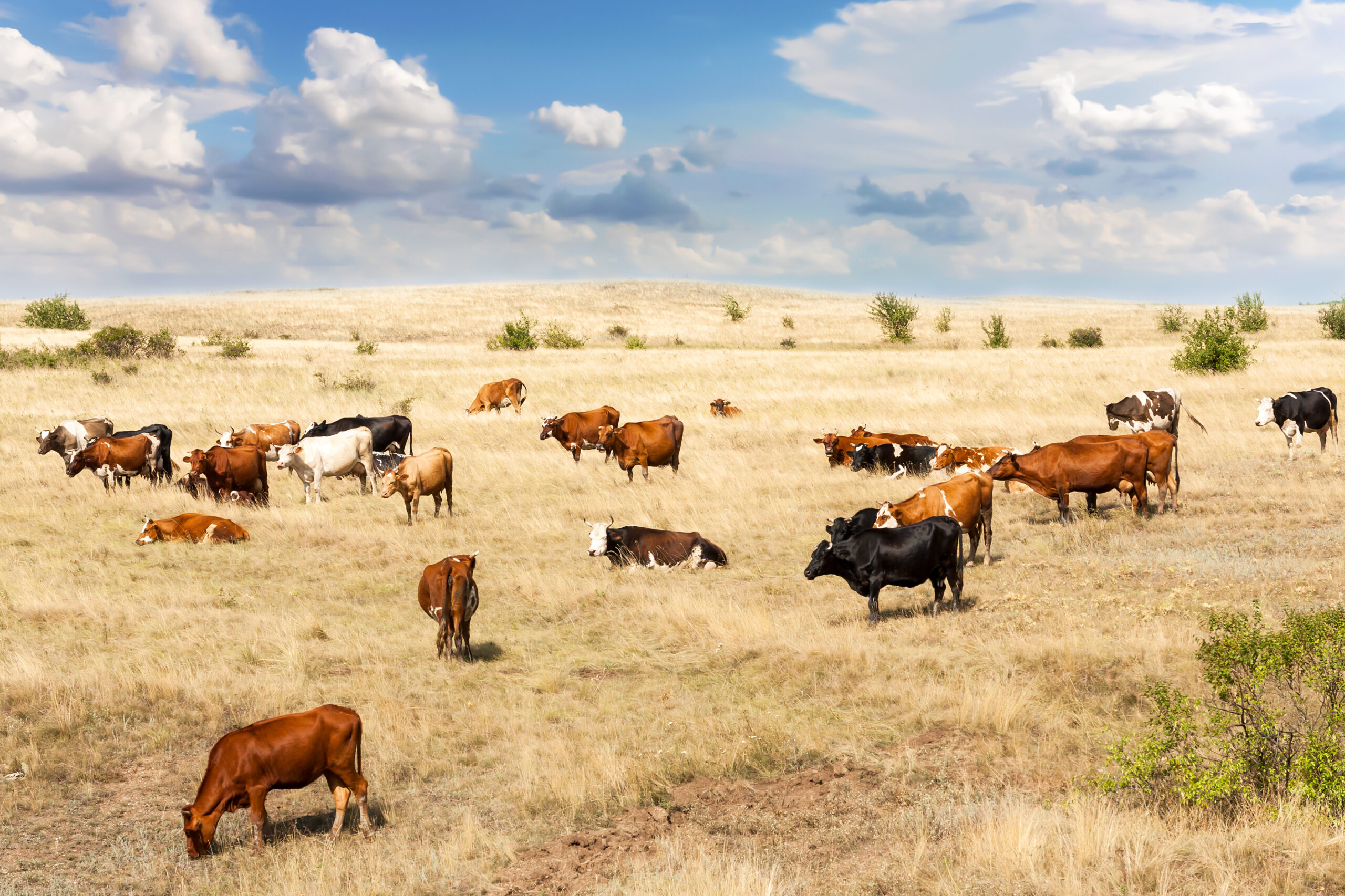
Barry Whitworth, DVM – Area Food/Animal Quality and Health – Specialist for Eastern Oklahoma
A ranch in Australia experienced an abnormally high number of stillbirths and weak born calves in 2004-2005. An investigation revealed that the usual infectious causes were not the problem. After additional testing, veterinarians diagnosed low levels of vitamin A as the cause.
According to Dr. Greg Hanzlicek, with the Kansas State Veterinary Diagnostic Laboratory (KSVDL), Kansas had an unusually high number of stillbirth cases and weak born calves in the spring of 2019. After many laboratory tests, it was concluded that the problem stimmed from a lack of energy, protein, Vitamin A, or combinations of all of these.
Both of the above examples demonstrate the importance of vitamin A in reproductive efficiency. Research has shown that low vitamin A levels during pregnancy are associated with abortions, stillbirths, and weak born calves. In addition to playing an important role in reproductive efficiency, vitamin A is essential for vision, bone growth, and maintaining epithelial tissue such as skin and hooves.
Animals obtain vitamin A from consuming green forage and/or the addition of vitamin A supplements to the diet. Lush green pastures contain high amounts of vitamin A. As plants mature and during times of drought, the amount of vitamin A decreases. The ranch in Australia experienced below average rainfall in the previous two years prior to the calving season. During the calving season, rainfall was below average with very dry conditions and little green forage was available.
In general, animals obtain adequate amounts of vitamin A by grazing green forage. Animals grazing green pastures will build a healthy store of vitamin A in the liver. When vitamin A is in short supply, the stores in the liver prevent deficiencies. According to Dr. Lalman, Extension Beef Cattle Specialist Oklahoma State University, the stores should last 2 to 4 months during times of deficiency. During times when green forage is not available, vitamin A supplements need to be added to the diet to prevent deficiencies.
When vitamin A levels are deficient, night blindness is one of the earliest clinical signs. Other eye issues include clouding of the cornea, ocular discharges, and possible ulcerations. Skin issues found when levels of vitamin A are deficient include a dry rough coat, scales on the skin, and dry cracked hooves. Other neurological signs include incoordination or gait problems. Seizures may occur due to the increase cerebrospinal fluid pressure. Birth defects have also been attributed to low vitamin A levels.
Animals displaying vitamin A deficiency should be treated immediately with vitamin A injections. If treated early, response is usually rapid and complete. However, delaying treatment may result in irreversible damage. Even with treatment, cattle with vision impairment due to vitamin A deficiency may not regain their sight.
Preventing Vitamin A deficiency depends on producers being attentive to the environmental conditions that favor low vitamin A levels in forage. During these times, producers need to supplement the diet with vitamin A. Producers need to be aware that Vitamin A supplements degrade rapidly, so vitamin A supplements should not be stored for long periods of time. In addition to vitamin A supplementation, research indicates that diets low in protein result in poor absorption of vitamin A. It is important that producers ensure that the rations have sufficient protein levels. Lastly, since colostrum contains high levels of vitamin A, producers need to ensure that newborns obtain adequate amounts of colostrum at birth.
Similar to the Australian example, most of Oklahoma had below average rainfall for the year of 2022. This resulted in pasture quality decreasing earlier than normal. Due to this year’s lack of green forage, liver stores of vitamin A may be inadequate for the animal’s needs. Producers need to ensure that the diets of their cattle have adequate amounts of vitamin A, energy, and protein. For more information about Vitamin A, producers should contact their veterinarian and/or visit with their Oklahoma State University County Ag Educator.
References
Hanzlicek, G. (2019, May). Difficult Calving Season Findings:2019. Diagnostic Insights. www.ksudl.org/resources/news/diagnostic_insights/may2019/difficult-calving-season2019.html.
Hill, B., Holroyd, R., & Sullivan, M. (2009). Clinical and pathological findings associated with congenital hypovitaminosis A in extensively grazed beef cattle. Australian Veterinary Journal, 87(3), 94–98.
Parker, E. M., Gardiner, C. P., Kessell, A. E., & Parker, A. J. (2017). Hypovitaminosis A in extensively grazed beef cattle. Australian veterinary journal, 95(3), 80–84.
Farm & Ranch
Lice in Cattle
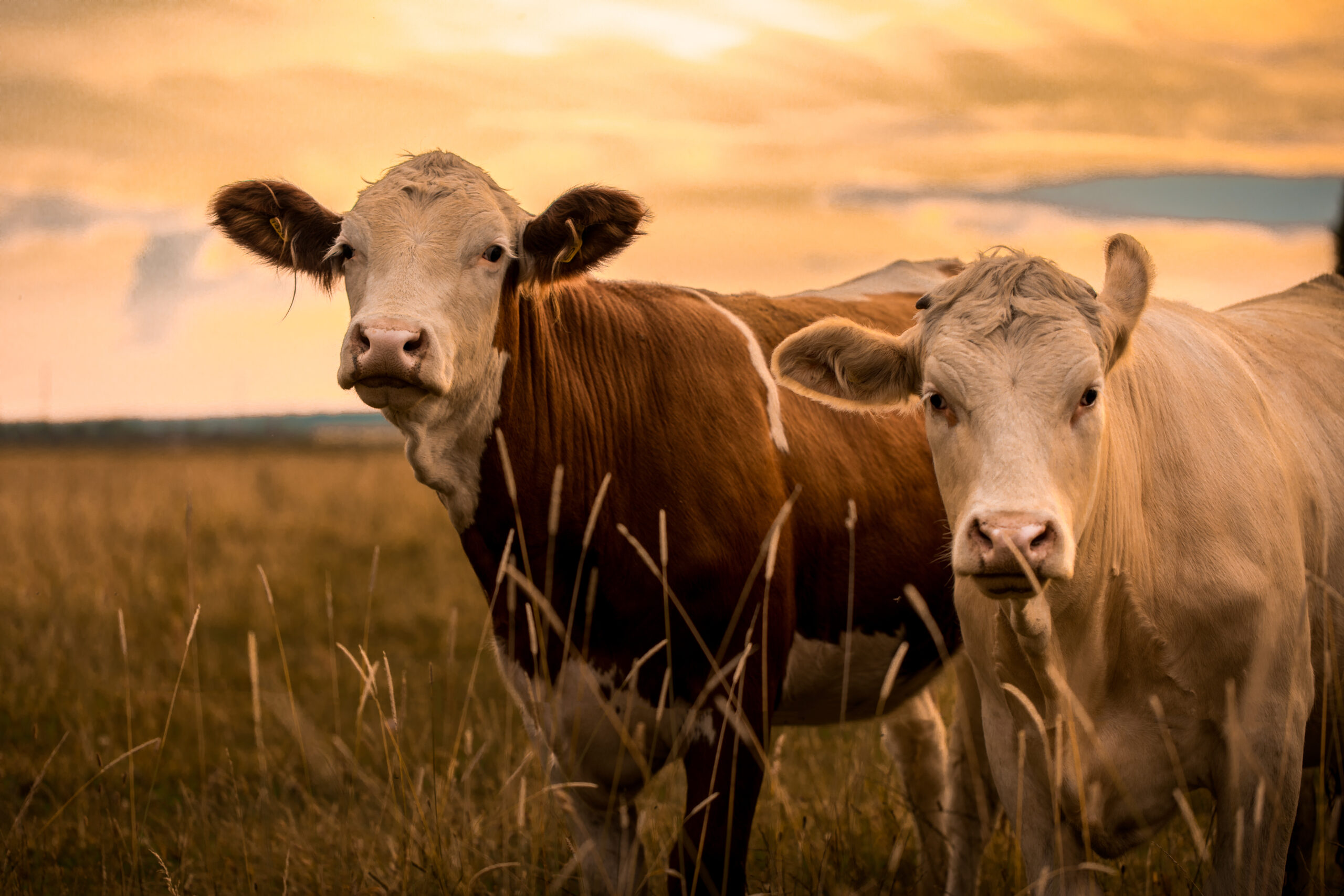
Barry Whitworth, DVM, MPH | Senior Extension Specialist
Department of Animal & Food Sciences | Freguson College of Agriculture | Oklahoma State University
Cattle lice cost Oklahoma cattlemen millions of dollars each year in decreased weight gains and reduced milk production. If cattle producers have not treated their cattle for lice this fall, they need to consider what type of lice control to initiate. This is especially true for cattle producers that had problems in the previous year. Cattle producers should monitor cattle closely during the months of December, January, and February. Producers should not wait until clinical signs appear before beginning treatment.
The life cycle of the different species of cattle lice are very similar. The life cycle begins with the female louse attaching her egg to a shaft of hair. The egg will hatch as a small replica of the adult. After several molts, the adult will emerge. The cycle takes around 3 to 4 weeks to complete. These newly hatched lice will spend their entire life on the host and are host specific which means cattle cannot be infected with lice from other animals.
Small numbers of lice may be found on cattle in the summer, but high populations of lice are associated with cold weather. Since cattle tend to be in closer proximity to each other in the winter, lice can spread easily between cattle. A small percentage of cattle tend to harbor larger numbers of lice. These animals are sometimes referred to as “carrier animals”, and they may be a source for maintaining lice in the herd. As with many other diseases, stress also contributes to susceptibility and infestation.
Signs of lice infections in cattle are hair loss, unthrifty cattle, and hair on fences or other objects. If producers find these signs, they may want to check a few animals for lice. They can check for lice by parting the hair and observing the number of lice per square inch. If an animal has 1 to 5 lice per square inch, they are considered to have a low infestation. Cattle with 6 to 10 lice would be considered moderately infested. Any cattle with more than 10 lice per square inch are heavily infested.
Cattle have two types of lice. One type is the biting or chewing louse. These lice have mouth parts that are adapted to bite and chew the skin. The second type is sucking louse. These lice have mouth parts that will penetrate the skin and suck blood and other tissue fluids. It is not uncommon for cattle to be infested with more than one species of lice.
The biting or chewing louse is Bovicola (Domalinia) bovis. This type of lice feeds on hair, skin, skin exudate, and debris. Typical clinical signs with this type of louse are hair loss, skin irritation and scabs on the skin. They are found on the shoulders and back.
Four types of sucking lice can be found in the United States. The first is the “short nose” louse or Haematopinus eurysternus. This is the largest cattle louse. This louse is found on the neck, back, dewlap, and base of the tail. The second is the “long-nose” louse or Linognathus vituli. This louse is bluish in color with a long slender head. This louse is found on the dewlap, shoulders, sides of the neck, and rump. The third is the “little blue” louse or Solenoptes cappilatus. This louse is blue in color and is the smallest cattle louse. This louse is found on the dewlap, muzzle, eyes, and neck. The last is the “tail” louse or Haematopinus quadripertuses. This louse has been found in California, Florida, and other Gulf Coast States. This louse is found around the tail.
The sucking lice have the potential to cause severe anemia if the numbers are high. This can result in poor doing cattle or in extreme cases death. They also can spread infectious diseases. The long-nose louse has been found to be a mechanical vector for anaplasmosis.
Prevention of lice infestation should begin in the fall. Producers should not wait for clinical signs to appear before beginning treatment. Several products are available to control lice. Producers should read and follow the label directions. Producers should keep in mind that many of the lice control products require two administrations to control lice. Failure to do this may result in cattle having problems with lice infestations.
Some producers have complained that some products do not work. These complaints have not been verified; however, this is a good reason to consult with a veterinarian for advice on what products to use. Most treatment failures are associated with incorrect application not resistance. Proper application of Pour-On insecticides is to administer from the withers to the tailhead. Also, the proper dose is essential for good control.
Cattle producers need to consider a few other things in lice control. Since cattle in poor body condition are more prone to lice infestation, producers need to be sure that the nutritional needs of their cattle are being met. Cattle that have a history of lice infestations should be culled. Lastly, any purchased cattle need to be inspected for lice before entering the herd. If lice are found, the animals should be isolated and treated before entering the herd.
If producers would like more information on lice in cattle, they should contact their local veterinarian or Oklahoma State University County Extension Agriculture Educator. They may also want to read Oklahoma Cooperative Extension Fact Sheet Beef Ectoparasites VTMD-7000 at https://extension.okstate.edu/fact-sheets/beef-cattle-ectoparasites.html.
-

 Attractions8 years ago
Attractions8 years ago48 Hours in Atoka Remembered
-

 Country Lifestyle8 months ago
Country Lifestyle8 months agoJuly 2017 Profile: J.W. Hart
-

 Country Lifestyle9 years ago
Country Lifestyle9 years agoThe House a Treasure Built
-

 Country Lifestyle3 years ago
Country Lifestyle3 years agoThe Two Sides of Colten Jesse
-

 Outdoors7 years ago
Outdoors7 years agoGrazing Oklahoma: Honey Locust
-

 Equine8 years ago
Equine8 years agoUmbilical Hernia
-

 Outdoors5 years ago
Outdoors5 years agoPecan Production Information: Online Resources for Growers
-

 Farm & Ranch7 years ago
Farm & Ranch7 years agoHackberry (Celtis spp.)

